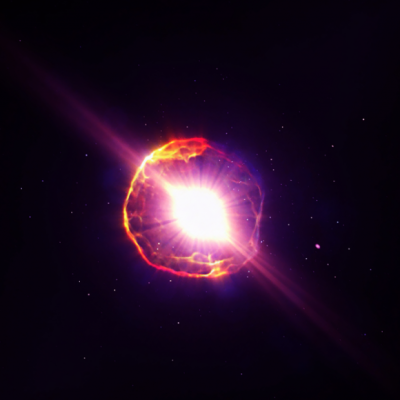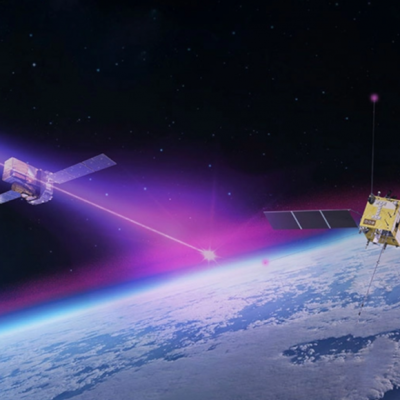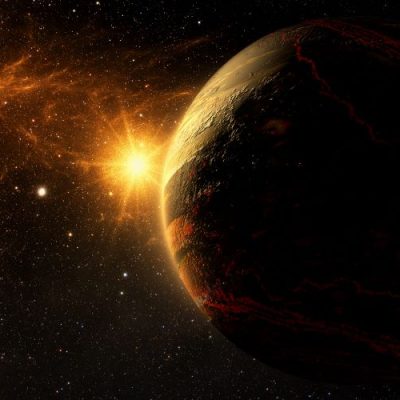For the first time, astronomers have observed two stars merging due to the immense gravity of a supermassive black hole. Stars with low mass, like our sun, die by losing their outer layers and fading into a white dwarf. More massive stars shine brightly before dying in a supernova, creating ultra-dense objects like neutron stars and black holes. When two such stellar remnants form a binary system, they can eventually collide. Astronomers have also theorized that stars can die by colliding with another star near a black hole. Researchers led by Andrew Levan from Radboud University in Nijmegen, Netherlands, have now observed a collision of two stars near a supermassive black hole while searching for long gamma-ray bursts (GRB).
The first indications of the event were observed on October 19, 2019, when NASA’s Neil Gehrels Swift Observatory detected a bright flash of gamma rays that lasted just over a minute. Such bursts typically originate from the supernova explosion of stars at least ten times more massive than our sun. The researchers then used the Gemini South Telescope to conduct long-term observations of the fading afterglow of the GRB to learn more about its origins. The observations allowed the astronomers to locate the GRB within a region less than 100 light-years from the core of an ancient galaxy, placing it in close proximity to the galaxy’s supermassive black hole.
The researchers found no evidence of a corresponding supernova that would have left its imprint on the light examined by Gemini South. Instead, they concluded that the explosion was most likely caused by the merger of two compact objects. The cores of old galaxies can host more than a million stars in a region just a few light-years wide, creating an extreme population density that could allow occasional stellar collisions, particularly due to the high gravity of a supermassive black hole that would disrupt the stars’ movements and hurl them in random directions. Eventually, these wandering stars would cross paths and merge, triggering a massive explosion that could be observed from enormous cosmic distances.







-400x400.jpg)


